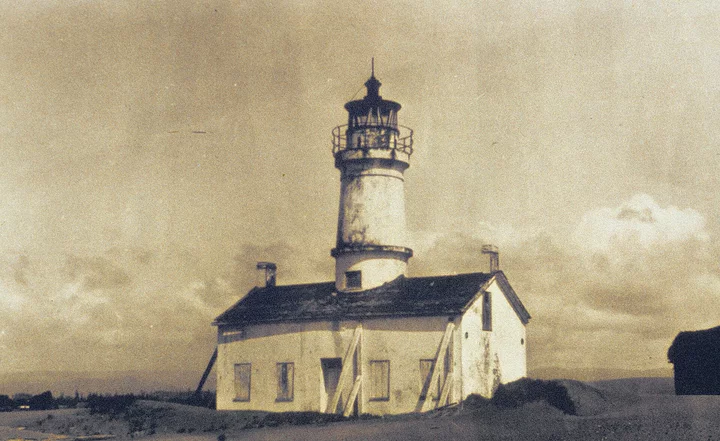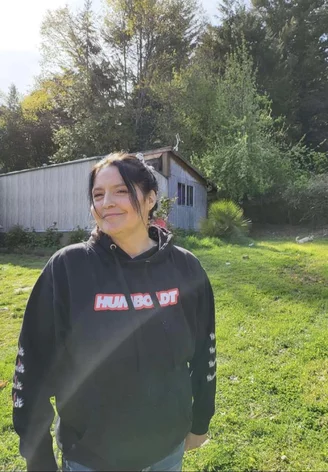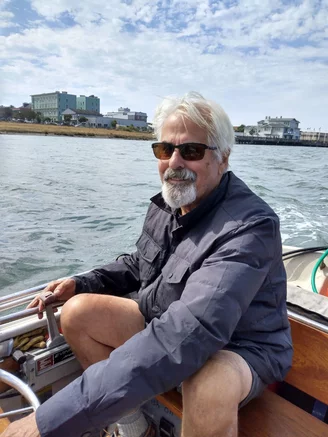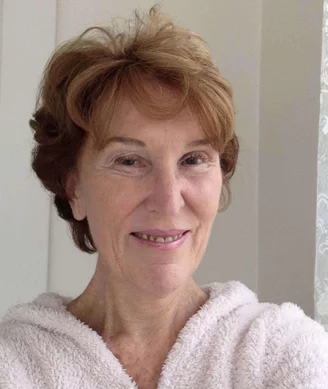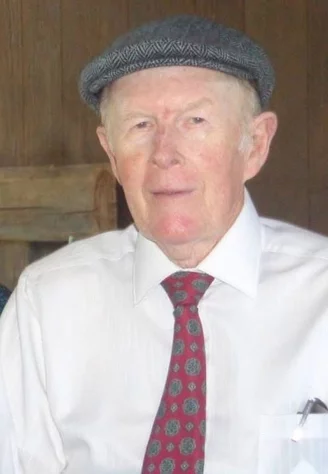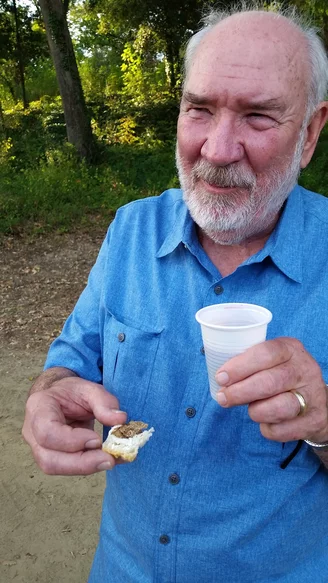HUMBOLDT HISTORY: The Treacherous Entrance to Humboldt Bay Harbor Wrecked Ships Left and Right. Was There Any Possible Solution?
Susan Pritchard / Saturday, Jan. 11, 2025 @ 7:30 a.m. / History
The original Humboldt Bay lighthouse on the North spit in 1920, long after it had been deactivated. Author: Unknown. Public domain.Via Wikimedia.
Humboldt Bay is a natural land-locked bay about 100 miles south of the Oregon state boundary. It lies in an indentation, or bight, in the coastline and is one of the few natural bays on the Pacific Northwest coast. It is approximately fourteen miles long and varies in width from three and a half miles to a half mile, with an average width of three quarters of a mile. Several small creeks empty into the bay, but no streams of consequence are tributary to this waterway.
The bay is separated from the ocean by two narrow sandy spits, whose ends form the entrance. A mile seaward of the spit heads lies a sand bar, a typical formation on the Pacific Coast.
Major William W. Harts, of the U.S. Army Corps of Engineers, described the sand bars found at all of the harbors along the coast. The harbor entrance is “obstructed by a crescent-shaped encircling bar. …The distance and the depth of water overlying the bars are largely dependent upon the area of the tidal prism within the bays and the exposure to storm action.” Through the bar, and the entrance, are channels carved in the sand by the tidal action. At Humboldt Bay “the channel through…[the] entrance, in its natural state, was shifting and dangerous, being uncertain as to position, width and depth, and averaging a mile in length.”
Complicating the uncertainty of the channel is the stormy conditions that are prevalent on the coast. It has been maintained by ship masters “that nowhere else have they encountered such waves as off Humboldt.” The entire crescent of the bar in its unimproved state was frequently a field of breakers. The dangers and hazards of the entrance to Humboldt Bay stem from the combined conditions of the bar, the violent and unpredictable waves, and the shifting and often shallow nature of the channel.
As early as 1850, when Hans H. Buhne first piloted the schooner Laura Virginia into Humboldt Bay, the dangers of the bay’s entrance were recognized. The passengers and crew of the Laura Virginia formed an association that was searching for the bay whose discovery by the Josiah Gregg party had been reported in San Francisco.
After seeing a smooth stretch of water that was presumed to be the bay, Buhne, the second officer, was sent to take soundings and see if it was possible to guide the Laura Virginia into the bay. After having crossed the bar in a small boat that was swamped twice before reaching land, Buhne returned and guided two more of the Laura Virginia boats into the bay. The passengers in one of these boats became so apprehensive that they almost refused to cross the bar after seeing the “terrific breakers… [that] mark…[the] line where the waves of the ocean meet the ebb tide.” The entrance to the bay itself was almost obscured by those breakers.
Despite the hazards encountered by Buhne and the Laura Virginia Association, the full extent of this navigation barrier to trade and development was not immediately recognized. The early settlers did not have many exports, and the shipping was limited. For example, during the first half of 1852, only six vessels from the Humboldt region arrived in San Francisco. The rise and development of the lumber industry rapidly changed the numbers of ships upon the bay. Only a year later 143 ships made the trip to San Francisco from Eureka with large loads of lumber. The full threat of the bay entrance to shipping became obvious by the late 1850s. By 1855, even with a tug in operation to guide schooners in and out of the bay, twelve ships had been wrecked trying to navigate the entrance. The alternate to risking a crossing when the entrance was rough was to remain “bar-bound” for days, unable to cross the bar because of the high waves.
During the stormy winter months ships were often kept in the harbor for weeks, unable to leave with their valuable cargoes of redwood lumber. Other ships found it necessary to leave the bay only partially loaded so that they could make it across the bar with its shallow channels.
The maps of the United States Coast and Geodetic Survey were an attempt to help mariners enter the harbor. The earliest map done by the Survey in 1851 gives the following advice on how to enter and find the bay. The sailing directions began with a description of the bay:
This harbor may be easily recognized by a remarkable red bluff facing the entrance with a perpendicular front to the sea of 96 feet, and by the headland known as Table Bluff, five miles to the southward. To enter the harbor, bring Howard’s House (a large four story white house), to bear by compass S.E. and well on width a point of trees on the highland two miles back. Run in on this range until across the bar, when the breakers on either side of the channel will be sufficient guide to the anchorage.
These directions were only satisfactory for a few years. The natural erosion of the heads of the spits by the waves greatly altered the entrance by 1858. The channel had also moved from a northwesterly position to an almost due west location. Recognizing the variableness of the channel, the coast survey maps, beginning in 1858, no longer gave sailing directions and the individuals crossing the bar were dependent upon the pilots for help.
An example of a typical crossing experience is described by some of the soldiers and their wives who came to establish Fort Humboldt in January of 1853. The notorious reputations of the entrance was known by all on board the steamer Goliah. When the Goliah reached the bay, the Captain, “Old Bully Wright,” found the bar too rough to attempt a crossing. It was necessary to wait until the following day when the conditions were more favorable for a crossing.
Wright refused to signal for a pilot, believing that he knew the entrance as well as anyone. The surgeon’s wife, Mrs. Underwood, was not as sure about their safety when she saw the “masts of several wrecked vessels that were evidence of the dangers of ‘crossing the bar’.” Lt. George Crook was also concerned about making the difficult passage. He commented in his autobiography that “we labored on the bar, the old ship nearly breaking in two. All on board experienced great relief when we were safely over.” Most who crossed the bar felt a similar relief in finding that they had survived the treacherous crossing. Not all were as lucky.
With the increase in shipping, stimulated by the rapid growth of the lumber industry and the development of agricultural pursuits, came an increase of tragedies involving the crossing of the bar. An example is a drowning accident that occurred in February 1870. The Humboldt Times reported that the Captain of the brig Crimea had been washed overboard. Captain Lassen was the sole owner of the brig, and was concerned with its safety while crossing the bar. The brig was towed out of the entrance and across the bar through the channel by one of the tugboats on the bay. Lassen was last seen “in the main rigging of his vessel, but no one saw him when he fell or was carried overboard by the sea, nor indeed, does it seem that he was missed until she had cast off from the tug.” It was the consensus of the crew that Captain Lassen had been washed overboard by one of the several heavy seas that had hit the Crimea while she was crossing the bar.
The dangers of the bay entrance were cited in the statistics of the United States Life-Saving Service whose annual reports “chronicle more terrible shipwrecks at Humboldt Bay than at the great port to the south (San Francisco).” Though the dangers of the bay entrance were recognized, little was done to lessen the hazard in the first forty years following the settlement of the Humboldt Bay region.
One of the most tragic bar wrecks, in terms of loss of life, was that of the lumber steamer Brooklyn, shown above, in its prime. The photo below shows all that remained after the vessel rolled over crossing the bar in high seas on Nov. 8, 1930. Of the crew, 19 men were lost and one survived. Photos via the Humboldt Historian.
The first step taken toward greater Humboldt Bar safety was the erection in 1856 of a lighthouse tower near the entrance, on the North peninsula, by the lighthouse service. The money for building the tower was first appropriated in 1851, but construction was delayed by inadequate funding, poor transportation, and problems with contractors. These problems, caused by lack of foresight, continued to plague all future improvements on Humboldt Bay in the nineteenth century. Even after the tower was completed, inadequate planning resulted in more construction. For example, when mariners complained that the original structure was too low, it was necessary to raise the tower several times. It was almost twenty years after the lighthouse was completed that a bell boat was added in 1872 to the entrance warning system to help warn ships during the dense fogs that plagued the coastline. In one year the keepers at the Humboldt lighthouse logged “over 1,100 hours of fog.” Due to the stormy weather the bell boat was short lived, and was replaced in 1874 with a steam whistle.
Despite the continual improvements to the lighthouse and its warning system, mariners were still dissatisfied with the performance of the lighthouse. In 1886, after a series of severe storms and unusually high tides had nearly destroyed the structure. Congress was petitioned for permission to move the lighthouse to the nearby large bluff four miles to the south of the bay entrance. Other reasons for removal of the lighthouse were the complaints of mariners and the opinion of the Lighthouse Board that the bay entrance was not the best location for the structure. It was the belief of the Lighthouse Board that the proximity to the Humboldt bar, with its constantly breaking waves, not only cut “the sound of the fog signal, but it also obscures the light when the weather is generally clear.” The Humboldt lighthouse closed on October 31, 1892, and the Table Bluff lighthouse began to warn of the dangers along the Humboldt coastline. The buildings of the old lighthouse would be used by the engineers of the Army Corps while they sought other, more concrete ways to improve the entrance to Humboldt Bay.
One of the first to call for more physical improvements was the editor, William Ayres, of the Democratic Standard. Ayres, beginning in 1877, began agitating in his editorials for “securing congressional assistance for the improvement of our harbor.” He was convinced that the natural potential of Humboldt Bay as a shipping harbor needed to be developed, and the only way to do that was by creating an entrance and harbor that allowed easy ingress and egress of ships of great draft.
Ayres was a man of vision. He saw Eureka and Humboldt Bay as becoming the commercial center of Northern California. He believed that with an expenditure as low as $300,000 the bay could be improved and that Eureka and Humboldt Bay could become “inevitably…the great initial shipping point for all foreign vessels engaged in the redwood lumber trade and for the great bulk of the shipping that is done from Humboldt County, particularly for all that portion any considerable distance inland.” With this object in mind, Ayres worked diligently for his cause during the seven years that he was editor of the Democratic Standard. It was largely due to his activities that the attention of Congress and the Army Corps of Engineers was drawn to the Northern California bay, and a series of attempts launched to improve the bay entrance.
Ayres’ first editorials met with little success. He was not dissuaded, and argued frequently and articulately about the benefits to be gained from improving the bay. It was Ayres’ belief that the harbor improvements would help not only Humboldt County, but also the surrounding counties of Del Norte, Siskiyou. Trinity and Shasta. He hoped that with the support of these counties it would be possible to get the attention of Congress and its support for the improvement of the bay.
Ayres’ estimate of $300,000 to improve the entrance was too great a sum for the recently formed County of Humboldt or City of Eureka to finance. It was also too great of a sum to be raised from the lumber barons who stood to profit most from the scheme. The industry was recovering from the severe national depression of the 1870s and was little inclined to fund a project of unknown results. Thus, it was necessary to turn to the federal government, who through the Corps of Engineers during the Nineteenth Century had become increasingly active in harbor and river improvements, in the interest of both national security and commerce.
It was the Corps whom Ayres wished to reach, as they had the knowledge, technical expertise and experience to improve the bay entrance.
It was Ayres’ belief that by increasing the depth of water across the bay by six feet a great surge in the amount of shipping would result. It was necessary for him to convince such doubters as Captain Hans H. Buhne, who had piloted the Laura Virginia, and, as late as 1881, still maintained that it was impossible to improve the treacherous entrance. In order to convince Buhne and others, Ayres turned to economic justifications for his plans.
In an article on April 27,1878, Ayres explained how the additional six feet of water over the bar would benefit the shippers on the bay by using a concrete example of the cost of shipping a million feet of lumber from Eureka to San Francisco. Under the conditions of the period, it was necessary to ship that amount of lumber in at least five different cargoes. The cost for shipping the million feet at the 1878 shipping and towing charges on the bay came to $5,750. According to Ayres, with an increased depth on the bar ships of greater draught could utilize the harbor and it would only be necessary for two cargoes to transport the million feet of lumber. Ayres then argued that lower rates could be charged for both the towing and shipping charges. Using the contemporary costs of towing and shipping, Ayres believed the increased depth of the bar would result in a savings of $45,000 for the individual shipper. These statistics would have been very impressive to the lumbermen in the area who were recovering from a devastating national depression.
Beyond the immediate savings to the lumber companies, Ayres was convinced that the improved entrance to Humboldt Bay could result in an increase in the amount of shipping. The lower charges would open up foreign markets to redwood lumber which had previously been closed because of high shipping costs. Ultimately, Ayres argued, the additional six feet of water over the bar would result in the immediate doubling of the “value of every foot of redwood timberland in our county or contiguous to it. Thinking minds who are interested in the growth and development of this section should consider this proposition well.”
###
Next: The rocky course toward bay improvements.
###
The story above is excerpted from the January-February 1989 issue of the Humboldt Historian, a journal of the Humboldt County Historical Society. It is reprinted here with permission. The Humboldt County Historical Society is a nonprofit organization devoted to archiving, preserving and sharing Humboldt County’s rich history. You can become a member and receive a year’s worth of new issues of The Humboldt Historian at this link.
BOOKED
Yesterday: 8 felonies, 6 misdemeanors, 0 infractions
JUDGED
Humboldt County Superior Court Calendar: Friday, Jan. 2
CHP REPORTS
Sr36 / Alderpoint Rd (HM office): Traffic Hazard
1050 Mm96 W Hum R10.50 (HM office): Traffic Hazard
ELSEWHERE
RHBB: Driver Trapped After Seizure Reportedly Leads to Crash at Fourth and I Streets in Eureka
Mad River Union: APD: Arcata declares State of Emergency
Eureka Woman Arrested for Public Intoxication, Meth Possession
LoCO Staff / Saturday, Jan. 11, 2025 @ 7 a.m. / Crime
Press release from the Humboldt County Sheriff’s Office:
On Jan. 9 at about 8 p.m., a Humboldt County Sheriff’s deputy was dispatched to the Green Diamond property on the 400 block of Bay St. in Samoa for the report of an unwanted subject refusing to leave the property.
The deputy located and detained a female subject, later identified as Sara Hoyos, 43, of Eureka, near the main gate entrance. The deputy was informed that prior to arrival, Hoyos was drinking from the handwashing station and attempted to open the door of an employee’s vehicle.
Hoyos was observed to have rapid and inconsistent speech, random outbursts, and dilated pupils; she was also making nonsensical statements and unable to stay still. She believed that a person she knew was sitting in a Green Diamond employee’s vehicle, but there was no one in the vehicle.
Hoyos was placed under arrest for public intoxication and the deputy conducted a search incident to arrest; methamphetamine was located in two of her pockets.
Hoyos was then transported to the Humboldt County Correctional Facility for the following charges:
- Public intoxication—PC 647(f)
- Possession of methamphetamine—HS 11377(a)
The Humboldt County Sheriff’s Office would like to thank the security personnel that reported this suspicious behavior. The Sheriff’s Office would also like to encourage community members to call law enforcement when they observe suspicious activity.
Anyone with information about this case or related criminal activity is encouraged to call the Humboldt County Sheriff’s Office at (707) 445-7251 or the Sheriff’s Office Crime Tip line at (707) 268-2539.
OBITUARY: Jeannette Elvera Robbins, 1971-2025
LoCO Staff / Saturday, Jan. 11, 2025 @ 6:56 a.m. / Obits
Jeannette Elvera Robbins was born December 23, 1971 in Hoopa
alongside her identical twin sister, Maria Robbins. She passed away
peacefully in her sleep in the early morning of January 4, 2025.
Jeannette and Maria were inseparable from the day they were born and
shared an unbreakable bond. Two of their most cherished traditions
were road trips of any distance, planning and celebrating their kids’
birthdays no matter how old they got.
Jeannette was the daughter of George Robbins Jr and Lana Crutchfield. She was raised on Kepel Flat and McKinnon Hill Rd located on the Yurok Indian Reservation, where she spent the majority of her life. During her childhood, you could always find Jeannette on her horses or by the river. She lived by her words “Gone playing from the time the sun came up until the sun went down.”
Jeannette’s first love was born in 1994, and from then on her child became her life. She adored all of her children and grandchildren and would do anything for them. You would always find her buying everything in her sight, that she thought they might need. She was known as a homebody but you could always find her at her kid’s events no matter what it was, whether it be a school play, a sporting event, or graduations. She was the most caring and loving parent and grandmother one could ask for. She will forever be known for the love she gave and for being the best mother and “gumma.” There will never be another like her.
Jeannette was a force to be reckoned with, known for her excellent culinary skills, big heart, impressive driving skills (a true Robbins trait), and her warm, embracing hugs. There would often be times when she was personally requested to prepare entire feasts for local events. However, beware: her kitchen was her domain, and perfection was what she strived for. Beyond her culinary skills, her heart belonged to her family. Spending time with her kids and loved ones brought her unparalleled joy. No matter the time or day, Jeannette was always there, ready to lend a helping hand or listening ear to anyone who needed it. Her unwavering compassion earned her a special place in the hearts of all who knew her.
For the last 15 years, she enjoyed many adventures with her life partner, Anthony Lavato.
She is survived by her mother: Lana Crutchfield, her partner Anthony Lavato, and her children Alex (Micole), Tristan, Travis (Yiannoula), and Dana (Austin) Perry. Her grandchildren: Albert Perry II and Cruz Robbins. Her siblings: Maria, Dick, Tyke, Erica, Lynnette Hicks (Cory), Valisha, Lydia, Kapel Robbins and her BFF/sister Jennifer Crayton. Nieces and nephews: Samantha Crutchfield, Julia Simms (Willie), Brendan Crutchfield, Brett Robbins, Trayce Crutchfield, Presley Robbins, Rena Gibbens (Bubba), Star Gibbens, Son-Son Robbins, Merk Robbins (Janette), Crissy Robbins, Grizzly Robbins (Kehala), Aurelia Alatorre (Cristian), Cecelia Robbins, Rocky Robbins (Jazzy), Great Nieces and nephews: Willie Jr, Kepel, Wyatt, Michael, Aaralyn, Aaron, Lana, Vanessa, Wayne, Bella, Kion, Loveah, Joe-Joe, Nickolas, Dahlia, Merky, Osiria, Iverson, Kenny, Talon, Falcon, Joaquin, Meskwoh, Chayton, Grizzly, Faron Troy, Rey-goh-uh, Sister (Thompson), Nikwich (Bean), Rocky Jr, Rori, Cristian Jr, Amias, Theresia, Lucas, Myriah, Stormy, Ronald, Evelina, Gloria, Dewayne, Guillermo, Maria, Julian. Aunts and Uncles: Eddie Koch Sr, Kim Koch, Terry (Stan) Lovell, Jenny (Mike) Smothers, Marilyn McCovey, Cousins: Lana, Kathy, and Allison McCovey, Rowds, John-John and Ronnie Robbins, Theresia Erickson, Axel Erickson, Tawny and Donovan Lovell, and Eddie Koch Jr.
She is preceded in death by: Grandparents George Robbins Sr, Theresia Erickson Ross and Sherwood Ross, Viola and Edwin Koch, and Gilbert Moore. Father George Robbins Jr and her Stepfather William Crutchfield Sr, brother Faron Robbins, great auntie/uncles Ruth Johansson, John and Axel Erickson, uncles John (Rocky) Robbins Sr and Frank Erickson Sr, cousins: Robbie Robbins and Frank Erickson Jr and her niece Marcee Robbins.
There will be no services held at this time. A private close family viewing will be held.
In the early spring, Jeannette will be laid to rest next to her father at the Robbins family cemetery located at Kepel Village on the Yurok Reservation.
Arrangements were made with Paul’s Chapel in Arcata.
###
The obituary above was submitted on behalf of Jeanette Robbins’ loved ones. The Lost Coast Outpost runs obituaries of Humboldt County residents at no charge. See guidelines here. Email news@lostcoastoutpost.com.
OBITUARY: Scott John Keele, 1948-2024
LoCO Staff / Saturday, Jan. 11, 2025 @ 6:56 a.m. / Obits
Scott John Keele passed away
peacefully under Hospice care at his country home on Dec. 12, 2024.
It was the culmination of a courageous 5-plus
year battle with
pancreatic cancer. Along the way, Scott was constantly supported and
guided by his wife and life partner, Susan. Their resilience and
positive attitude in the face of such a devastating diagnosis often
left their family and medical care team inspired.
Scott was born in 1948 in Oakland to Lillian and Mervyn Keele. With sister Kathi, the family moved to Eureka two years later. And so began a love affair with Eureka and Humboldt County that lasted his entire life. Scott never missed an opportunity to praise the beauty and quality of life of the North Coast.
He loved the outdoor life here. In his youth, he and his friends explored the gullies around Highland Park and the shoreline of Humboldt Bay, and later the bay itself in a small wooden boat. Sometimes there were unexpected adventures, such a hopping on a train and winding up in Scotia.
At Jacobs Junior High Scott met the love of his life, Susan Matson. Their relationship grew and by high school they were inseparable. After Scott’s college years in Washington and Oregon, the two were married in Eureka in 1970. They settled in Eureka and, with a degree in Special Education, Scott began teaching at the Glen Paul Center for Exceptional Children. Scott’s passion was helping people with mental disabilities live as normal a life as possible over their entire lifespan. He knew that many of these individuals were capable of far more than people thought.
Over his 35-year career, he created many community job opportunities, developed independent living arrangements for adults and guided them in making this transition. He developed a software educational program that teaches independent living skills, a program that became adopted by other programs around the state. After retiring in 2007, he continued to consult with these agencies for several years. Scott also started and coordinated the local Special Olympics for many years.
Scott and Susan were married for 54 years, celebrating their 50-year anniversary on a delayed trip to the Canadian Rockies in 2023. They had two wonderful children, Nicole and Justin. They moved to their dream home in 1990 where Scott loved doing projects around the 13-acre property and in his shop. Two of his favorite shop projects were restoring a 1948 Morris Minor and a vintage wooden boat. Together Scott and Susan always maintained a beautiful garden.
Scott had a good life, marred only by the tragic loss of Justin to an accident in 2004, he and Susan’s darkest day. It did, however, make the family closer than ever. Scott loved to host gatherings at their home. For many years they had an annual celebration of Justin’s life for his many friends and family.
Scott loved getting out on the bay in kayaks, going to the beach, hiking and camping in their small trailer, skiing at Horse Mountain and spending time at the family cabin at Lake Tahoe. These adventures often included lifelong friends, Jim and Becky Lang and Larry and Susie Matson. Their last trips together were a Rhine River cruise last May and camping in Oregon in October. Over the years, Scott also loved going on motorcycle rides around Humboldt County with long-time friend, Jerry Roberts. But tops on Scott’s list of what he loved most was spending time with Nicole, her husband, Mike, and children Ella and Miles whether at their home in Oregon, or in Eureka or on trips together to Hawaii, Disneyland and Amsterdam. Scott loved being part of his grandchildren’s lives. Their love and admiration for their “Poppy” was boundless and Scott cherished every moment he spent with them.
Scott is survived by his beloved wife Susan, daughter Nicole DeBlasi (Mike), grandchildren Miles and Ella DeBlasi, sisters Kathi Ayala and Kristi Manutai (Arona), sister-in-law Sharon Smullin (David), brother-in-law Larry Matson (Susie), his extended Lucas family and numerous nieces and nephews.
Scott’s family would like to express their gratitude to Dr. Cataldo, Dr. Ricci and the entire Oncology Medical Team at Providence/ St. Joseph Hospital in Eureka and to the Hospice of Humboldt team for the wonderful care he received from them.
Scott will be remembered as a man who was tremendously devoted to his family and who lived life to the fullest, always with a can-do spirit. He loved life and left no stone unturned.
He will be missed by every life he touched. A celebration of his life will be held in Eureka in the spring.
###
The obituary above was submitted on behalf of Scott Keele’s loved ones. The Lost Coast Outpost runs obituaries of Humboldt County residents at no charge. See guidelines here. Email news@lostcoastoutpost.com.
OBITUARY: Jeri Karen Thomson, 1945-2025
LoCO Staff / Saturday, Jan. 11, 2025 @ 6:56 a.m. / Obits
Jeri Karen Thomson left our world on January 8, 2025 at her home in Fortuna. She
succumbed to cancer with her husband, Jim “Dellie” Thomson, at her side.
Jeri Harbers was born in Chicago on November 10, 1945 to a young sailor returning from World War II and his new wife, who he had met in Chicago after he returned from the war. The new family along with their little girl and her full head of beautiful red curls soon relocated to her father’s hometown of Fortuna.
Jeri was a stereotypical first born. She was smart, precocious, and well behaved. Her mischievous behavior became apparent when she took delight in dressing her little brother, Bruce, as a girl. She was more mature when at age 8 her sister, Vicki, was born. She was a second mom to Vicki whom she helped raise, mentor, and even taught her to sew her own clothes. She supported her little sister through every path of her life.
A graduate of Fortuna Union High School in 1963, Jeri took the big step at 17 years old to attend San Francisco State University. But a college degree at this stage of her life was not in the cards. She brought her new husband, Clay Sollers, back to Fortuna and they raised their two young sons, Glenn and Keith there.
After some years and a divorce, Jeri reunited with her best friend from kindergarten. He was her soon-to-be husband, Jim. Their attraction was still foremost and present after 27 years. They married in 1979 and also made their home in Fortuna. As an insurance broker, she joined the family business, Harbers Insurance Agency. Typical of the Harbers offspring, Jeri sought a life outside of the insurance business. Jeri had the gift of creativity and she was very talented. She opened Heather Boutique where she sold her own crocheted creations along with other women’s clothing.
She later studied to be a paralegal and worked with an attorney in Eureka. Following a long-time interest in Anthropology, she obtained a degree in Anthropology at Humboldt State University. She always wanted to learn and was a prodigious reader with knowledge of many subjects. Jeri was naturally very smart. Even though she eventually obtained a college degree, it was foreshadowed by a natural inherent intelligence. She enjoyed doing word puzzles, anything that would challenge her. Jeri was also a talented artist. Not many knew of her talents because she didn’t share her artwork. Probably because of a lack of confidence she was not interested in sharing her creations with a wider audience.
She will be desperately missed by her family. It was also very important to Jeri that she keep in touch with her childhood friends. She will be missed by those friends and her friends and neighbors whom she cared so much about in Fortuna.
Jeri was born to Gerald and Dawn Harbers, both deceased. She is survived by her husband, James Delwin (Dellie) Thomson; her two sons, Glenn Sollers of Phoenix, Arizona and Keith Sollers of Ithaca, New York; Bruce Harbers and his wife, Jane, of Seattle, Washington.; and her sister, Vicki Clague, her husband, Jim of Reno, Nevada, and her favorite nephew, Jackson Clague.
No funeral services will be held.
###
The obituary above was submitted on behalf of Jeri Thomson’s loved ones. The Lost Coast Outpost runs obituaries of Humboldt County residents at no charge. See guidelines here. Email news@lostcoastoutpost.com.
OBITUARY: Stephen Leslie Harrow, 1941-2024
LoCO Staff / Saturday, Jan. 11, 2025 @ 6:56 a.m. / Obits
Stephen Leslie Harrow
March 1941 - October 2024
Steve was born in Washington D.C. in 1941. He was adopted at two months old by his birth mother’s sister and her husband, Kitty and Les Harrow. Kitty and Les were loving parents to Steve as he grew up in Ettersburg. Steve was a bright young boy that enjoyed school and his life on “The Ranch.” He helped his father log timber on the ranch and repair equipment. They both enjoyed playing the saxophone in the evenings.
His family home in Ettersburg was Steve’s favorite place on earth, and was the location of countless family events and visits from family and friends both near and far - the memories of which meant the world to him.
Steve graduated from South Fork High School in Miranda and went on to graduate from Humboldt State College (now Cal Poly Humboldt) with degrees in both physics and math, being the first person in his family to receive a college degree. He attended the University of Nevada at Reno, continuing his studies in physics. Steve was recruited by and worked for Shell Oil Company for over 25 years as a geophysicist, reading seismic data and guiding oil field exploration, spending most of his career in Houston, Texas with a brief 4-year transfer to New Orleans, working at One Shell Plaza.
Steve was a wonderful father to his three daughters, Kathy, Stephanie and Vicki. He was infinitely patient, enjoying coaching his daughters in youth sports and encouraging them to love playing tennis as much as he did. Steve was a great amateur tennis player. His favorite was mixed doubles. He played and won many Volvo Amateur titles in the South. Steve always involved his daughters in household projects and car maintenance, teaching us how to change a tire and change the oil in the family cars. He also taught all three daughters to drive at the ranch in the summer. He really was the best dad a daughter could have!
Steve was divorced from the mother of their three daughters in 1990, retired from Shell and moved back to California to spend time with his father in Ettersburg, caring for him until he passed away.
Steve went on to have a special relationship with Patricia Stephens in the early ’90s and cared for her when she was diagnosed with breast cancer.
Steve took up the hobby of ballroom dance later in his life and was a wonderful dance partner and excellent leader. In 1995 while at a dance, Steve met Diane Dehart and they became lifetime dancing partners.
Steve and Diane married in 1997 in a beautiful ceremony at the Ferndale Community Church, having all of their grandchildren as their attendants. They went on to travel the world together, driving through most every state including Alaska! They visited Russia, Australia, England and Ireland many times.
Steve and Diane had a lovely relationship, truly the perfect pair. They enjoyed traveling, playing cards, doing mathematical equations and puzzles, and visiting friends all over. They both had a deep love for their children, grandchildren and great grandchildren. As loving grandparents they attended sports games, visited on holidays and were present at weddings, graduations, births and always offering unwavering support.
After his own father passed away, Steve reached out and made a connection with his biological father who was a longtime resident of San Francisco. There Steve met his three half-brothers and went on to establish relationships with them, with many visits and memories made. Steve also had a close lifelong relationship with his two half-sisters and half-brother from his biological mother. Steve was the best big brother to all of his siblings. He took the time and made the effort to nurture their relationships.
To say that Steve will be missed is an understatement. His absence has left us heartbroken.
The family is holding a celebration of Steve’s well lived life on Saturday January 11, 1 -3 p.m. at the Victorian Inn in Ferndale. All are welcome.
If you would like to make a charitable donation in Steve’s honor, please choose an organization that provides musical arts to local youth or assists our local homeless and/or mentally ill population.
###
The obituary above was submitted on behalf of Steve Harrow’s loved ones. The Lost Coast Outpost runs obituaries of Humboldt County residents at no charge. See guidelines here. Email news@lostcoastoutpost.com.
OBITUARY: Daniel Frank Lytle, 1940-2024
LoCO Staff / Saturday, Jan. 11, 2025 @ 6:56 a.m. / Obits
Daniel Frank Lytle
July 20, 1940- November 8, 2024
A truly lovely man passed away on November 8, 2024, surrounded by myself, our daughter Sarah, and all four of our grandaughters: Erin, Gracie, Lylah and Ava. Also present was our dearest Brigid.
Dan was born in Alhambra, California to parents Barbara and Lowell Lytle. His sister Sharon was born two years later. The close-knit family moved to San Gabriel when he was three. The Mission San Gabriel Archangel had a large influence on his life. As well as being an altar boy, he attended kindergarten through twelfth grade there. After graduation he did odd jobs around the Mission— everything from digging the graves in the cemetery, to helping the cook Maria in the rectory. The latter inspired his love of cooking. He was also a docent at the Mission.
A life lived for 84 years is so difficult to sum up in a few paragraphs. Dan enjoyed cooking for his family and friends. He was self-taught by way of Julia Childs cookbooks. Dan was a voracious reader, having a vast library. He loved world and US history. But also spent many hours reading about different faiths and cultures, as well as sciences. Dan enjoyed traveling. His first trip to Europe was a solo trip in 1972. Together we traveled several times to Mexico, Europe, Hawaii and various places in the U.S. Dan loved classical music, theater and art. He shared this love with others in his life, helping to expose them to the arts.
Dan also held a strong work ethic. He was employed by several engineering firms in Southern California. He never called in sick or showed up late to work, which earned him respect from his superiors. He was well met, and well liked by his coworkers. Dan enjoyed his work life, being productive, and the social aspect that came with work. The work that he cherished and thrived in was his volunteer position as the director of the St. Joseph food bank, the Pantry Shelf. He expanded his repertoire of skills to include grant writing, public speaking, delivery, stock clerking, among many others. This work gave him so much satisfaction, knowing that he was giving back to the community
The adjectives that come to mind when I think of Dan are many — intelligent, gentle, humorous, imaginative, intuitive, well met, kind and loving. Mostly loving. He loved me and our family beyond measure. We met at work. It was love at first sight for me, and friendship at first sight for him. After three years of being friends, we went on our first date January of 1979. He proposed to me in the gardens of the San Gabriel Mission that May. We were married at the Mission October of that year. We went on to become a family of 5 with the birth of our children; Danny Jr, Sarah, and Timmy.
Dan was a present father in his kids lives, and later became a father figure in his granddaughters lives as well. Our kids and grandkids had the benefit of his imagination not just the stories he created, but in the masterful re-telling of classic stories such as The Legend of Sleepy Hollow. They were exciting, intense, and sometimes, a wee bit scary. Dad, Poppa, Grandpapa, was there for sporting events, school events or special occasions. But most importantly, he was there everyday. The family sat down for dinners every night, many of those prepared by Dan. Dan even endured many years of camping trips. Not his favorite pastime, but that’s how much he loved us. Dan’s family never had to wonder if he loved them. He told them and showed them on a daily basis.
Dan’s love for me was transformative. Truly I would not be who I am today if it were not for Dan. He believed I could do and be anything. And made me believe it. It was Dan who made an insightful observation that started me on my path to becoming a registered nurse. It was Dan who gave me the confidence to pursue my profession. Dan took over the household duties. Between Dan and our dear friends, Tom and Elise Frederick, the house was maintained, the children were taken care of, and I was allowed to focus on my studies. There was no one more proud of my accomplishments than Dan. His love made me a better person. Dan truly did raise me up. We were blessed to have 45 years together. We were soulmates, and he will always be the love of my life.
Dan’s journey with cancer began in December of 2021. In true Dan fashion, he approached it as a learning experience and a new adventure that we went on together. We are both grateful for the blessings along the way we received from so many people, from the many doctors at UCSF to our family and friends. I need to thank my co-workers at Redwood Memorial Hospital, who showed me grace when I needed to be home with Dan. I am blessed to work with such a caring group. I need to thank Deacon Tom Silva, who is truly a servant of God. He came when I called and ministered to Dan and our whole family. My friend Donna McQueen has been instrumental in putting the memorial service together. I can’t thank her enough. I need to mention Doctor Cass Kennedy. I don’t know what it was, but Dan and Doctor Kennedy immediately had a fondness for one another. Doctor Kennedy was instrumental throughout Dan’s journey. It wasn’t just her expertise, but her caring and going the extra mile that endeared her to both Dan and I. I can’t say enough about Brigid Young, I really can’t. More sister than friend to us both. Our kids and grandkids call her Auntie Brigid. Brigid was here daily. She moved quietly, making sure things got done. The housework, food, transportation and just being present with Dan and myself. Brigid is truly selfless. Thank you to her husband Tim for so graciously sharing her with us. Lastly I need to thank our daughter Sarah and our four grandaughters who traveled this journey with us, especially the last four weeks. Sarah brought so much comfort to her Dad, and helped hold down the fort. The grandaughters took turns sitting and talking with him, and being a source of comfort for us. One of the lessons of the Cross is that it was the women who stayed and were present.
Dan was preceded in death by his parents, Lowell and Barbara Lytle. He is survived by his wife, Maureen; his children, Danny Jr., Sarah Olson, and Timmy Lytle; and his grandchildren, Erin Lytle, Grace Olson, Lylah Olson, Ava Olson, and Dawson Lytle. He is also survived by his sister, Sharon Palmer (Gary); his brother-in-law, Leo Dooley; and his sisters-in-law, Colleen Haight (Jeff) and Mary-Anne Dooley. Additionally, Dan is survived by his cousins and numerous nieces and nephews.
A celebration of life for Dan will be held Saturday, January 18 at 11 a.m. at the St. Joseph Parish activity center located adjacent to the parish office at 2292 Newburg Rd., Fortuna. Light refreshments will be served afterwards. All are welcome. In lieu of flowers, please consider making a donation to the St. Joseph Pantry food bank, St. Vincent de Paul in Eureka, or the Red Cross for the L.A. wildfires.
###
The obituary above was submitted on behalf of Daniel Lytle’s loved ones. The Lost Coast Outpost runs obituaries of Humboldt County residents at no charge. See guidelines here. Email news@lostcoastoutpost.com.

